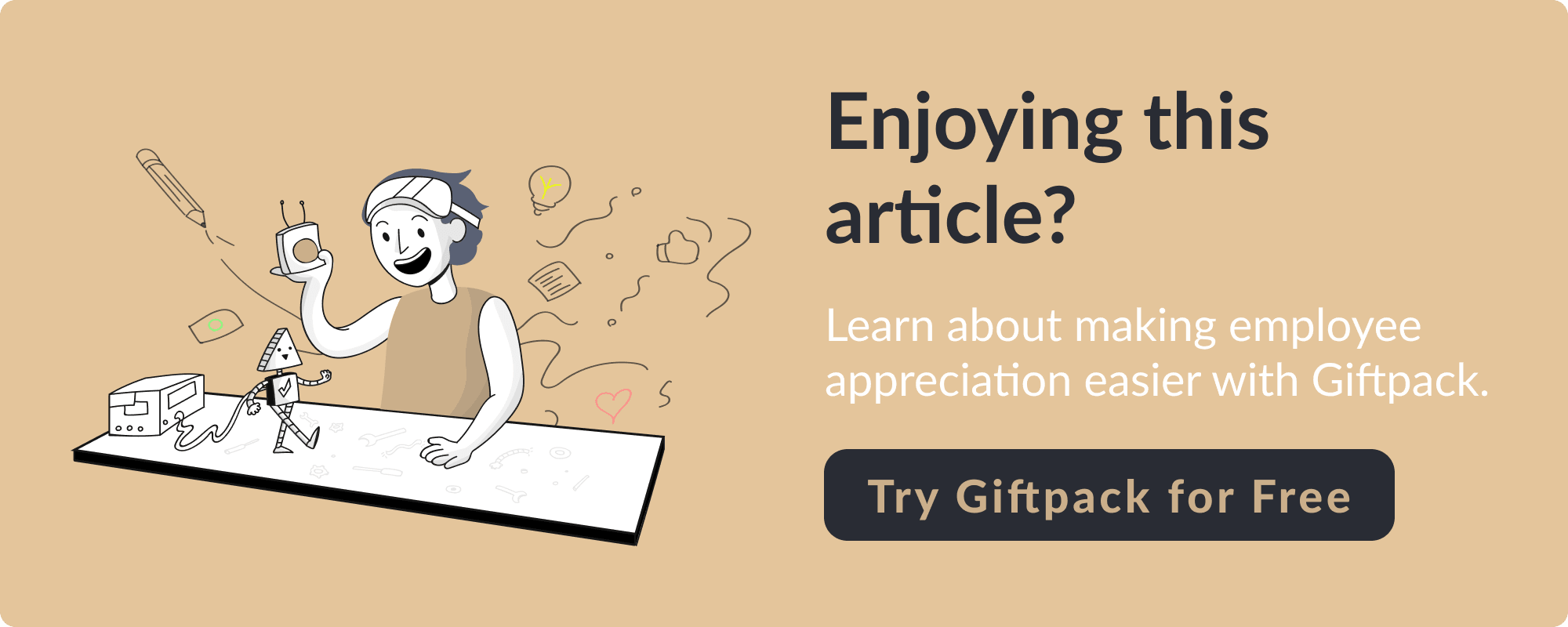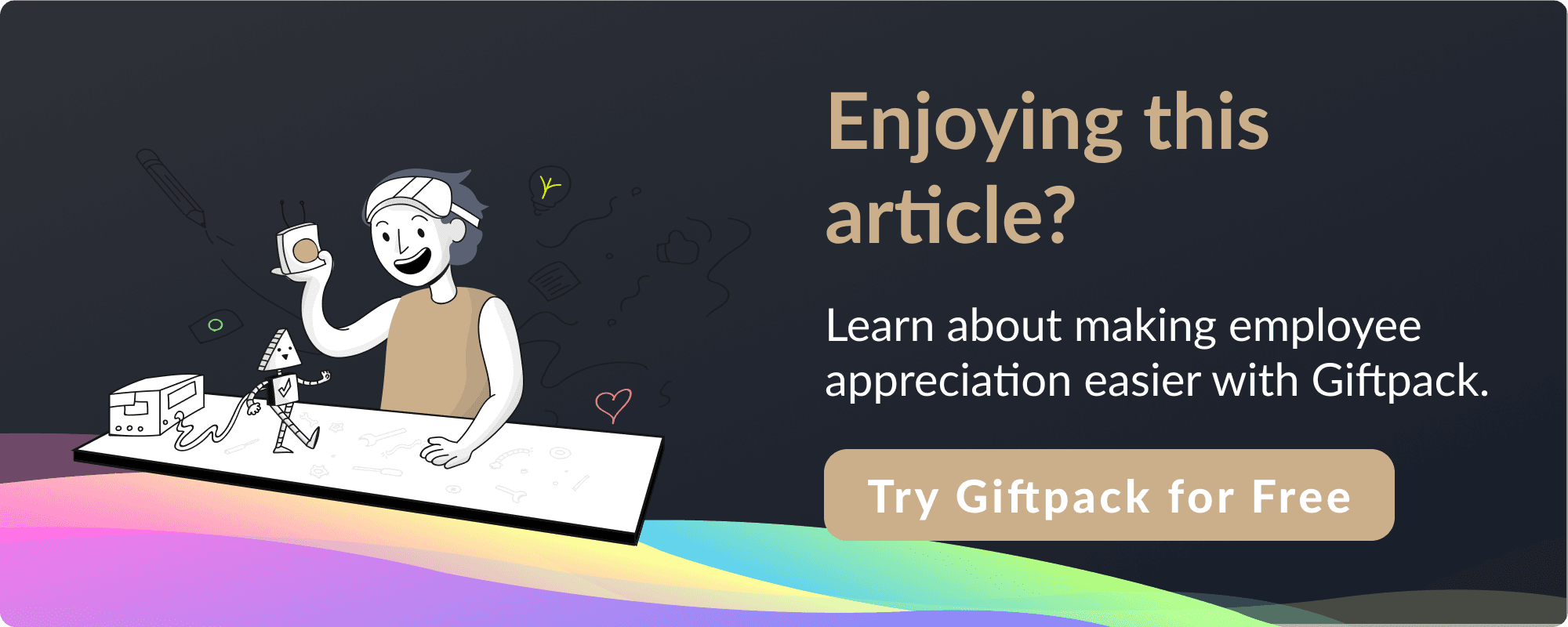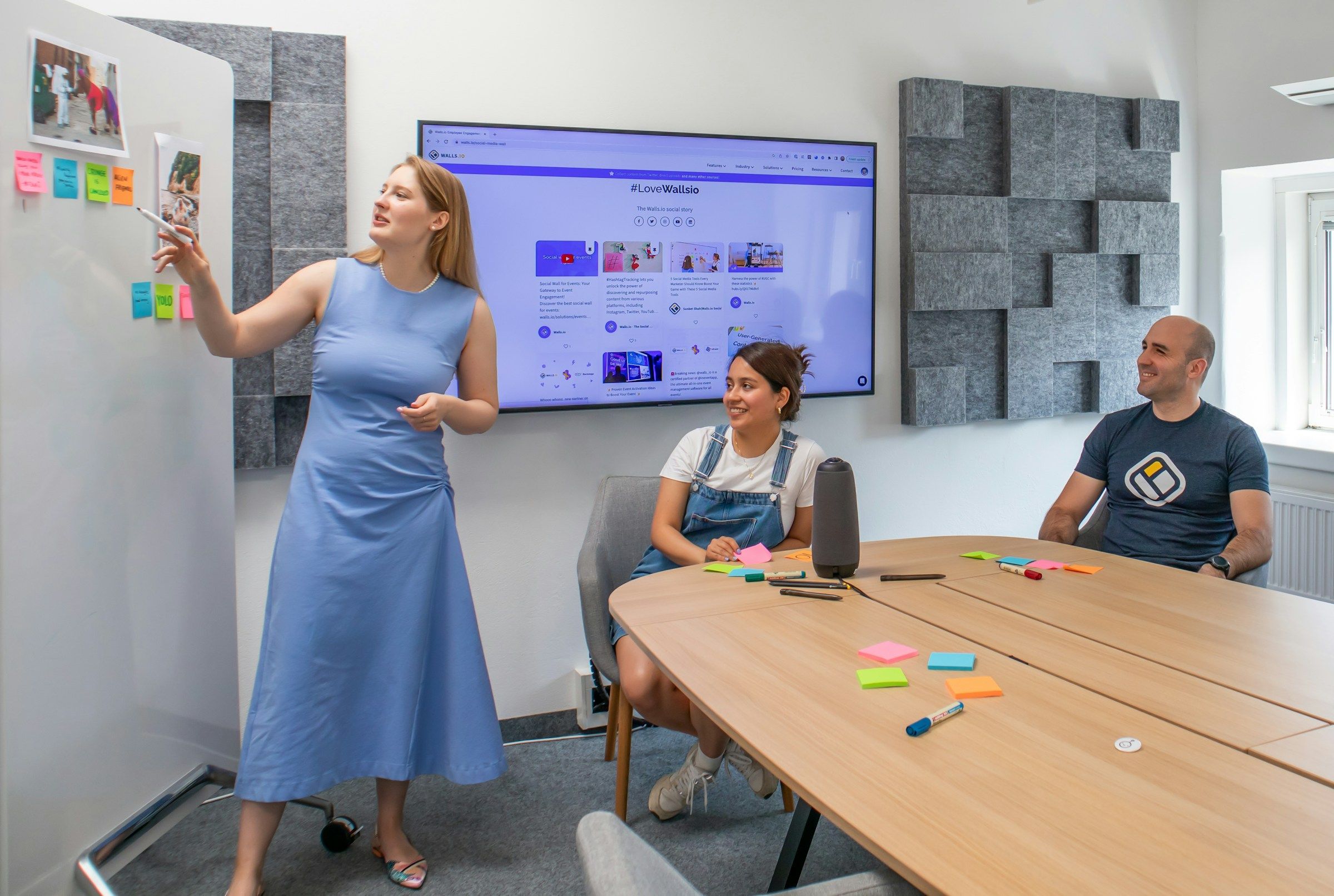
You've just launched a new company and hired your first employee. Exciting, right? But now you need to onboard them effectively and give them everything they need to succeed in their role without overwhelming them or wasting time. One of the most critical components of effective pemployee onboarding](https://blog.giftpack.ai/article/employee-onboarding) is writing SEO content that helps new hires learn about your company, products, and processes. But how do you write SEO content that’s informative, engaging, and relevant to new employees? That’s where this article comes in.
Company-branded swag is a great way to help new employees feel welcome and valued. But with so many options, it can be hard to know where to start. That’s where Giftpack comes in.
Pre-Onboarding Tasks (Before Day One)

First impressions count, and your communication sets the tone. To engage your new hire early, send a warm welcome email. Include key details like the start date and any tasks they must complete. This helps build excitement and ease any first-day jitters.
A Welcome Package That Wows
A welcome kit goes beyond words, creating an immediate connection. Include company swag, snacks, or a gift card for office décor. This personalized touch excites them and shows that your company values its team members.
Equip Them with Essential Docs
Provide them with the necessary documents before day one. This includes the employee handbook and a schedule for their first day. This will allow them to familiarize themselves with company policies and upcoming tasks, reducing anxiety.
Handle Admin Tasks Early
Administrative work isn’t glamorous, but it’s necessary. Ensure all accounts are set up, and paperwork is sorted. While some forms require the new hire’s input, most of it falls on your team. Create a checklist to make sure nothing is missed.
Mentorship: A Friendly Face
Assign your new hire a mentor. This person will be their go-to for any questions and will help them integrate into the team. Even if you don’t have a formal program, having a friendly face can make a huge difference in their comfort level.
Share the Excitement with Your Team
Announce the new hire to the rest of the team. Encourage them to introduce themselves and share their excitement. This will prepare existing employees to welcome the newcomer and foster a sense of inclusion.
Pre-Day One Tours and Meetups
Organize a casual meet-and-greet or office tour. This will allow the new hires to familiarize themselves with their surroundings and meet some of their colleagues. Keep it low-pressure with snacks and a relaxed atmosphere.
Prepare Their Workspace
Set up their workstation with all necessary equipment and logins. A clean, organized space helps them feel welcome and ready to start and ensures they can hit the ground running on their first day.
Materials Ready for Day One
Gather all the necessary materials, including training materials, tools, and benefits information. Having these ready to go shows you’re organized and respectful of their time.

First-Day Onboarding Tasks

When a new hire steps through your door, the first impression matters. Make them feel like they belong from the get-go. Greet them with a smile, show them around, and introduce them to their new colleagues. This will help them find the restrooms and break rooms and give them a taste of the company culture. Feeling part of the team early on can boost their motivation and engagement.
Get the HR Basics Out of the Way
While diving into paperwork is tempting, completing these tasks before the first day is better. Focus on:
- Tax forms
- Direct deposit setup
- A brief review of benefits
The employee handbook. This way, they aren’t overwhelmed and can focus on settling in. The deep dive into specifics can wait until later in the week.
Outline Their Role Clearly
Roles and responsibilities provide clarity. Equip your new employee with a job description highlighting key tasks.
Give them immediate projects to work on, making them feel productive immediately. A meeting with their direct supervisor can further illuminate performance expectations, goals, and evaluation criteria, setting a clear direction from day one.
Introduce Training and Onboarding
Introduce your new hire to:
- Essential tools
- Systems
- Resources
To help them clearly understand their responsibilities. Outline their training plan, but avoid inundating them with details. A training checklist ensures nothing is missed, allowing them to hit the ground running.
Familiarize With Communication Tools
Clear communication is crucial. On the first day, take some time to explain the company’s primary communication tools, whether it’s:
- Slack
- Microsoft Teams
- Good old email
Teach them about meeting etiquette and how to schedule or join meetings. This way, they won’t feel lost when staying in the loop.
Foster Social Connections
Social integration is just as crucial as understanding job duties. Arrange a team lunch or virtual meet-and-greet, highlighting upcoming social events or team-building activities.
Encourage participation in internal social channels or interest groups. Building a sense of community increases job satisfaction and promotes stronger teamwork.
Set Expectations for the Coming Weeks
Lay out a clear plan for the first week. Share a schedule of training sessions or team meetings, along with short-term goals to achieve by the end of the week. Clarify when they can expect a formal performance review or check-in meeting with their supervisor. This way, they know exactly what to expect and can focus on settling in.
How AI Personalization Transforms Corporate Gifting with Giftpack
At Giftpack, we simplify corporate gifting while maximizing impact. Our client gifting service uses a custom AI algorithm to create personalized swag box options.
Try Giftpack's client gifting service for free today.

Related Reading
• HR Operations • HR Employee Relations • Importance of Employee Relations • Employee Relations Management • Remote Onboarding • Onboarding Automation
First-Week Onboarding Tasks

Administrative tasks are crucial to the onboarding process. Confirm that all paperwork is complete, from payroll forms to tax documents. Missing paperwork causes delays, so make sure everything is in order.
Ensure System and Equipment Access
Nothing dampens a first week like being locked out. Confirm your new hire has access to necessary systems, software, and equipment. A smooth setup shows you’re prepared and helps them get to work.
Introduce Key Departments and Team Members
Introduce your new hires to the teams and departments they’ll work with early on to help them build relationships. Understanding cross-functional workflows makes them feel more integrated.
Clarify Short-Term Goals and Job Expectations
Eliminate uncertainty. Discuss short-term goals, job expectations, and performance indicators. This will help your new hire understand their responsibilities right from the start.
Overview of Upcoming Projects and Deadlines
Give the new employee a heads-up on tasks, projects, and deadlines. This lets them see how their role aligns with company objectives and start contributing sooner.
Schedule an End-of-Week Check-In
Set up a one-on-one meeting at the end of the first week. Address any questions or concerns and adjust training or support as needed. Feedback here is critical for ongoing improvement.
Get Them in Meetings and Company Events
Ensure your new hire is included in all relevant meetings and invited to social events. This will help them feel connected to the workplace culture.
Monitor Training Progress
Check in periodically to ensure training is on track. Offer support and adjust the pace if necessary. This prevents your new hire from feeling overwhelmed.
Review Employee Handbook and Company Policies
Go over the employee handbook and company policies. Clear expectations from the start prevent misunderstandings later on.

First 30-60-90 Days: Ongoing Onboarding Tasks

1. First 30 Days: Laying the Groundwork
The initial month is about getting new hires comfortable and confident in their roles. During this period, clarity on roles and responsibilities is crucial. Employees should be introduced to your organization's policies, expected behaviors, and tools. They’ll need to grasp your mission, vision, and values.
Understanding stakeholders and current projects is key, along with frequent meetings with managers to establish a strong foundation. Building relationships with team members is essential, as is identifying skills gaps and setting short- and long-term goals. To ease this transition, consider developing reusable orientation activities like welcome presentations and team lunches.
2. 30-60 Days: Building Momentum
As the second month kicks off, it’s time for employees to start contributing more actively. They should begin progressing toward the goals and KPIs set in the first month. This phase will involve more project engagement and team discussions, where individual plans diverge.
Look for opportunities to provide small, quick wins to boost confidence and momentum. As they gain experience, employees should begin to see how their roles fit into the larger picture.
3. 60-90 Days: Gaining Independence
In the final month of the onboarding plan, new hires should be well on their way to achieving their goals and milestones. They’ll work more independently, with less supervision, and take on more team responsibilities. This is when employees showcase their expertise and even lead projects.
Mistakes might still happen, but the expectation is that they’ll learn from them and continue to grow. Accountability is higher now, and team members should look to the new hire for guidance and support.
4. Beyond 90 Days: Ensuring Long-Term Success
Studies show that around 72% of new employees will have settled into their new role within 3 months, 22% by 9 months, and the rest around 10-12 months. Once the 90-day period is up, the focus shifts to ensuring that new hires are settled and thriving in their roles. Stay interviews can be valuable for gathering feedback on what’s working and what needs improvement.
Onboarding surveys can also provide insights into the process's success. To measure success, monitor key metrics like new hire turnover, time to productivity, and training completion rates. Remember, the rule of five suggests that you only need to gather feedback from a handful of employees to identify patterns and areas for improvement.

Related Reading
• Human Resources Onboarding • HR Development • Employee Onboarding and Offboarding • Employee Satisfaction KPI • HR Operations Work • Onboarding Checklist • Employee Relations Strategies • Employee Relations Best Practices • Employee Onboarding Process
Best Practices for a Seamless Onboarding Experience

Integrating your tools is more than just convenience; it’s about creating a seamless onboarding experience. HR platforms today are flexible and intuitive, allowing you to build a business dashboard without coding. This means all your resources can be accessible from a central hub. By streamlining automated processes, you optimize the onboarding flow, making it smoother for everyone involved.
Security Is Trust
Investing in security measures isn’t just a checkbox; it’s a necessity. With our connected world, data security is paramount. Integrate top-notch encryption methods and stay informed about evolving security trends.
If you’re in sectors like healthcare, pay attention to HIPAA compliance partner with a no-code platform that offers world-class security. Protecting personal details builds trust with your new hires.
Make Onboarding Interactive
Interactive onboarding is about engagement, not just information. Use tools that turn ordinary sessions into experiential journeys. Prioritize conversations over monologues. This approach fosters a sense of belonging and encourages new hires to engage actively with your company culture.
Keep Improving with Feedback
Onboarding isn’t set in stone. It evolves. Fresh perspectives, especially from new team members, are invaluable.
They offer insights free from organizational bias. Regularly seek feedback through surveys or informal chats. This input helps you refine and improve your onboarding process continuously.
Encourage Lifelong Learning
Onboarding is the start of a continuous learning journey. Provide newcomers with various resources and support their growth beyond the initial phase.
Promote a culture where improvement, growth, and learning are the norms. This approach helps retain talent and ensures your team evolves with the organization.
Build A Meaningful Employee Recognition Program With Ease with Giftpack's Client Gifting Service
Giftpack is revolutionizing corporate gifting, turning it from a chore into an opportunity for a meaningful connection. Imagine a platform that doesn't just select gifts but tailors them with precision.
Giftpack’s AI algorithm considers everything from demographics to social media cues, making each gift personal. This isn’t just about giving; it’s about giving something that matters to an employee, a client, or a loved one. It’s gifting made easy, thoughtful, and impactful.
Global Reach Without the Hassle
Corporate gifting can be a logistical nightmare, especially with international recipients. But what if it wasn't? Giftpack’s platform simplifies the whole process, offering global delivery with ease.
It’s not just about sending something; it’s about sending something that resonates, no matter where the recipient is. With over 3.5 million products to choose from, you’re not just sending a gift; you’re sending a message that they matter.
Making Gifting Personal Again
In a world filled with generic gifts, personalization is rare. Giftpackturns this on its head, offering various customizable options. It’s not just about picking something off a shelf; it’s about choosing something that speaks to the individual.
Imagine the impact of a gift explicitly chosen for someone based on who they are and what they love. This is how you make connections, foster loyalty, and build lasting relationships.

Related Reading
• Roles and Responsibilities of HR Operations • Positive Employee Relations • Employee Relations Examples in HR • Employee Relations vs Human Resources • Employee Relations Metrics • Employee Relations Issues • Onboarding Best Practices • Employee Relations Software • Best HR Onboarding Software • Digital Onboarding Solutions • Employee Onboarding Examples
Make your gifting efficient and improve employee attrition rates with Giftpack AI
Visit our product page to unlock the power of personalized employee appreciation gifts.
Click this Banner to book a call
Ask us anything about Corporate Gifting